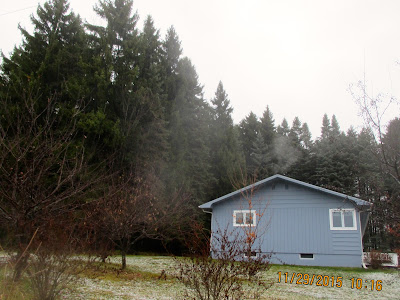YOUNG NORWAY SPRUCE, VERY FAST GROWING (google photo)
Wednesday, 9:30 AM. 37 Degrees F at the ferry dock, 33 on the back porch. Wind NNE, calm with light to moderate gusts. The sky has a high overcast and it is foggy over the channel. The humidity is 92% and the barometer is rising, predicting relatively warm and sunny weather for the rest of the week.
The Norway spruce, Picea abies, in the Pine Family (Pinaceae) is a dominant tree throughout much of Central and Eastern Europe. It intergrades with other species towards the edges of its range. It is very fast growing and valuable for its timber. It does best in moist, rich soil but will tolerate many different conditions, including acidic soils. Its short, sharply pointed needles are a medium to lighter green in color. It has the longest cones of any of the spruces. It tolerates warmer temperatures better than white or Colorado spruce. For me, its significant esthetic feature is the very pendulous, weeping branching habit of older trees.
Norway spruce can be an effective conifer in the landscape, but I do not like to mix them with native trees because they are so dissimilar in habit as they mature. I dearly love the looks of its close relative, the Serbian spruce, but I would not mix it with our native species either, for the same reason.
Our good friend, naturalist Andy Larsen, planted a large grove of Norway Spruce on what was once his grandfather's property in Bayfield, about fifty years ago, and they are now a magnificent stand of trees, a majestic backdrop to the houses built around them.
|









No comments:
Post a Comment